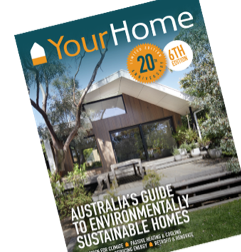Search
-
Key points
- Passive cooling means using design choices to reduce heat gain and increase heat loss.
- Buildings in all Australian climates require some form of cooling at some time of the year to be comfortable. Passive cooling is especially useful in hot and humid or hot and dry climates.
-
Passive design
-
‘Passive design’ is design that works with the local climate to maintain a comfortable temperature in the home. Good passive design should reduce or eliminate the need for additional heating or cooling depending on your location and often relies on an active occupant to work properly.
-
Key points
- Orientation is the position of your home in relation to the path of the sun and the prevailing wind in your region.
-
Key points
- ‘Passive House’ is a design standard that achieves thermal comfort with minimal heating and cooling by using insulation, airtightness, appropriate window and door design, ventilation systems with heat recovery, and elimination of thermal bridges.
-
Key points
- Thermal mass is the ability of a material to absorb, store and release heat. Thermal lag is the rate at which a material releases stored heat. For most common building materials, the higher the thermal mass, the longer the thermal lag.
-
Key points
- Passive heating, or passive solar heating, means trapping heat from the sun inside your home and using thermal mass, heat flow and insulation effectively to store, distribute, and retain the heat.
-
Key points
- Design for climate means that your home is designed to keep you at a comfortable temperature throughout the year, based on where you live.
- Australia has 8 main climate zones, ranging from tropical zones in the north to cold zones in the south. Each zone performs differently throughout the seasons.
-
27 March 2025
New case study from Collie, WA
A new case study has just been published on the Your Home website.
-
New home using solar hot water and solar photovoltaic (PV) technology.
-
Key points
- Australia has various building rating systems.
- The rating systems are used to assess energy efficiency and other aspects of sustainability for existing buildings or new building designs. Some rating systems assess building components.
-
This modern and cost-effective new build, based on the Design For Place Banksia House, has created a practical family home.
-
New build using passive solar design and solar technology, and lightweight materials, on a sloping site.
-
A house that aims to balance energy efficiency and material selection to achieve affordability and sustainability.


